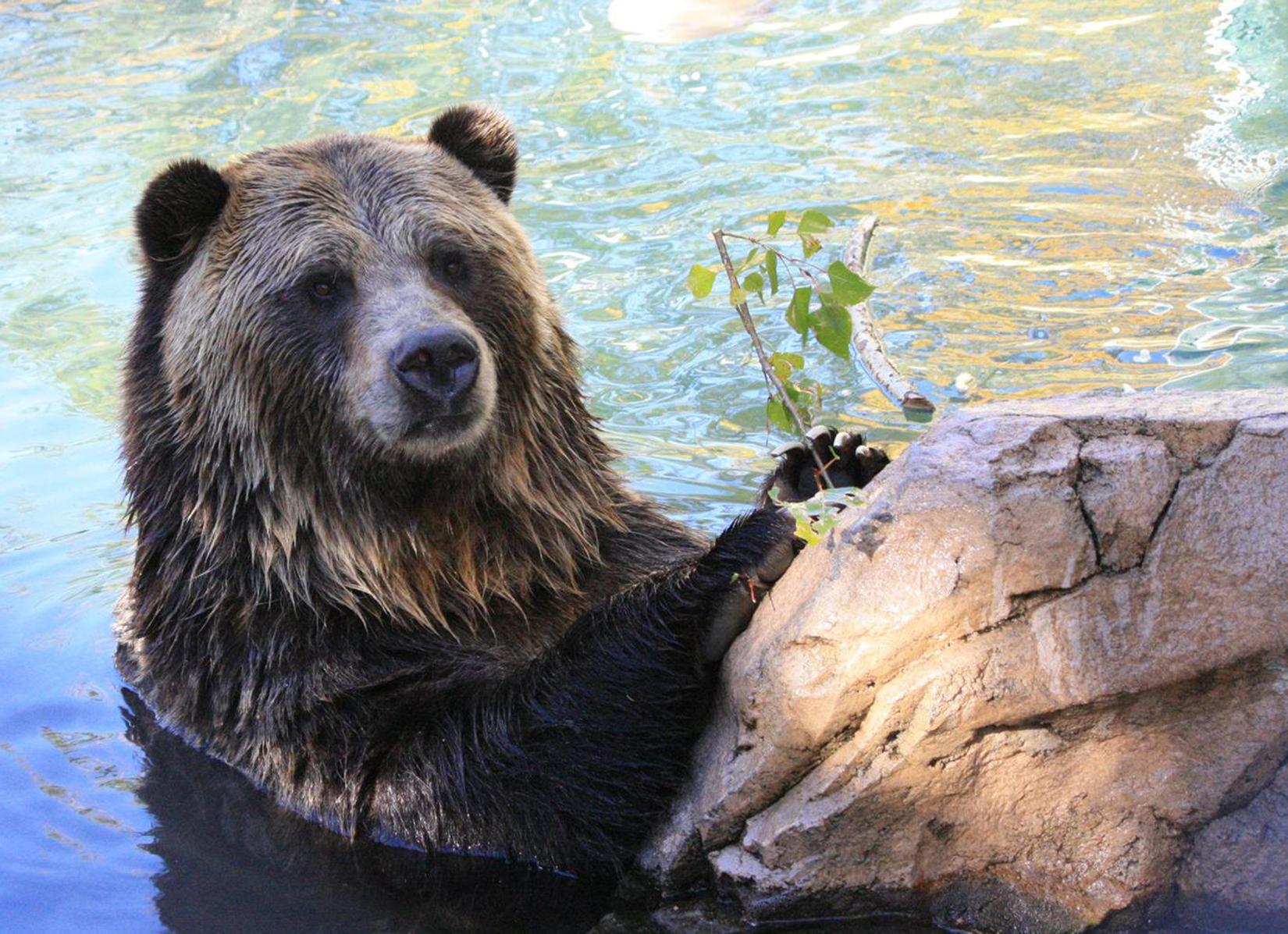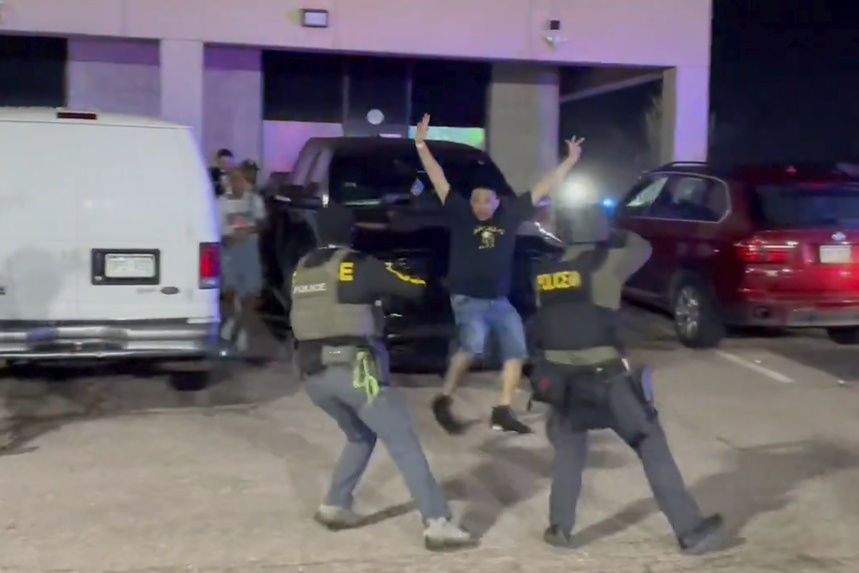

A viral video of grizzly bears being pummeled by baseball-sized hail in Colorado Springs on Monday got quite a few folks on social media riled up. Why, they wanted to know, didn't Cheyenne Mountain Zoo appear to be doing more to corral the animals into shelter.
Fourteen people were injured, including three zoo employees who were hospitalized. A vulture and a duck also died following the storm.
KKTV 11 News posted the video of the bears on its Facebook page.
One Facebook user named Jennifer Sentman commented on the post saying, “Was no one in the staff aware (of) a severe storm was coming? I feel we all had warnings and keepers should’ve gotten animals and people inside.”
But in a statement released Tuesday afternoon, Cheyenne Mountain Zoo said the hail storm came without any warning, causing staff, guests and animals to scramble for shelter.
“All of the Zoo’s animals have permanent shelter, but just as there were humans injured while trying to get to shelter, some animals were injured,” the statement read. “Even animals that use their on-exhibit dens and shelters on a daily basis were prone to confusion by the fast onset of the storm.”
Cheyenne Mountain Zoo is accredited by the Association of Zoos and Aquariums, a non-profit that requires facilities to operate under the highest standards of animal management. Accredited zoos and aquariums are required to have four emergency drills a year, including one weather-related drill, said Rob Vernon, spokesman for the AZA.
Vernon said the zoo was in touch with AZA immediately after the storm and did “everything right.”
“When a storm like that comes up quickly the staff have to scramble and move around and take of as much as they can,” he said. “The zoo did everything right and the staff acted swiftly and took care of the guests and animals as appropriate.”
AZA re-evaluates zoos and aquariums every five years and Cheyenne Mountain Zoo said they have abided by its “rigorous requirements” for 35 years.
The Denver Zoo is also AZA accredited, said Jake Kubie, the communications director of the zoo. He said the Denver Zoo has a number of plans and policies in place in case of severe weather.
“We certainly closely monitor and track severe weather throughout the day,” he said. “If lightning, severe thunderstorms are detected at anywhere from three to eight miles outside of the zoo, we alert all staff. And if necessary, we’ll alert all our guests and direct them towards identified shelter throughout the zoo.”
The parking garage and some basements at the Denver Zoo are safe zones for guests. There are also designated shelters set up that meet each the 4,000 animals’ requirements, he said.
Cheyenne Mountain Zoo’s incident command team used their training to make sure guests and animals were safe, the zoo said.
More staff injuries were being reported Tuesday and veterinarians were assessing animal injuries, according to the zoo. The hail also caused damage to hundreds of vehicles and the zoo’s skylights.
An Evacuation Center has been opened at#CheyenneMountainHighSchool, 1200 Cresta Rd. Colorado Springs to support the 100+ cars that were damaged due to the hail at the#CheyenneMountainZoo. Please go there for reunification, protection and refreshments. pic.twitter.com/PnwUeI8bl1
“Even in ‘safe areas,’ staff was actively engaged in ensuring guest safety,” the zoo said. “Animal staff attempted to assist any animals who needed help to seek shelter, but ultimately, human life-safety had to be our first priority. A number of staff were injured trying to help animals.”
On the KKTV 11 News’ Facebook post, Christine Barkalow thanked Cheyenne Mountain Zoo’s staff and said she was in the grizzly bear exhibit during the storm that hit “extremely quickly” and without warning.
“What we witnessed were countless zoo employees risking their own safety to ensure that all the zoo guests were safe and getting help if (sic) needed, and that all the animals were safe,” she wrote. “It was very obvious that they were doing everything in their power to help the animals under their care. What is more, they were working so efficiently that it was also obvious that they had emergency procedures in place.”









